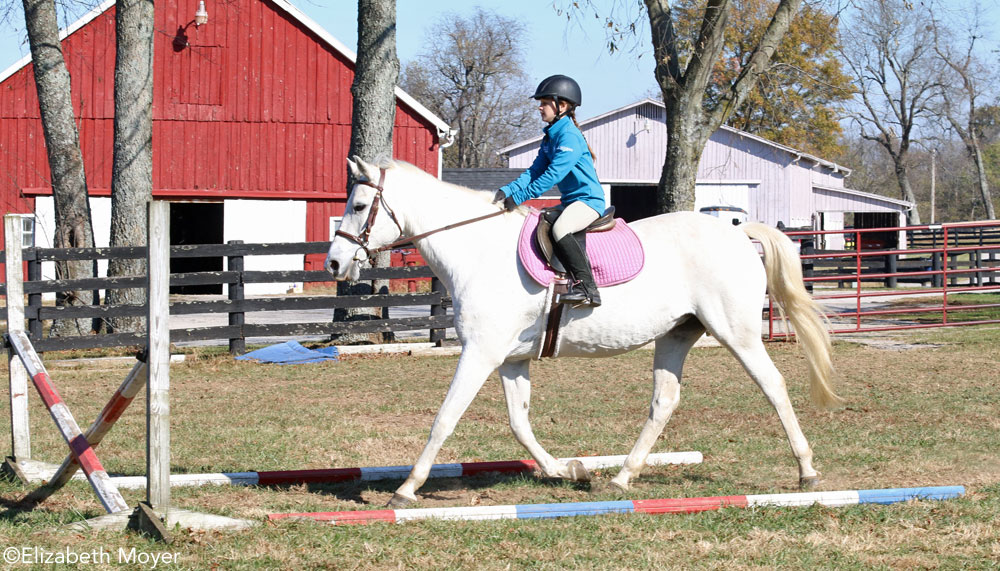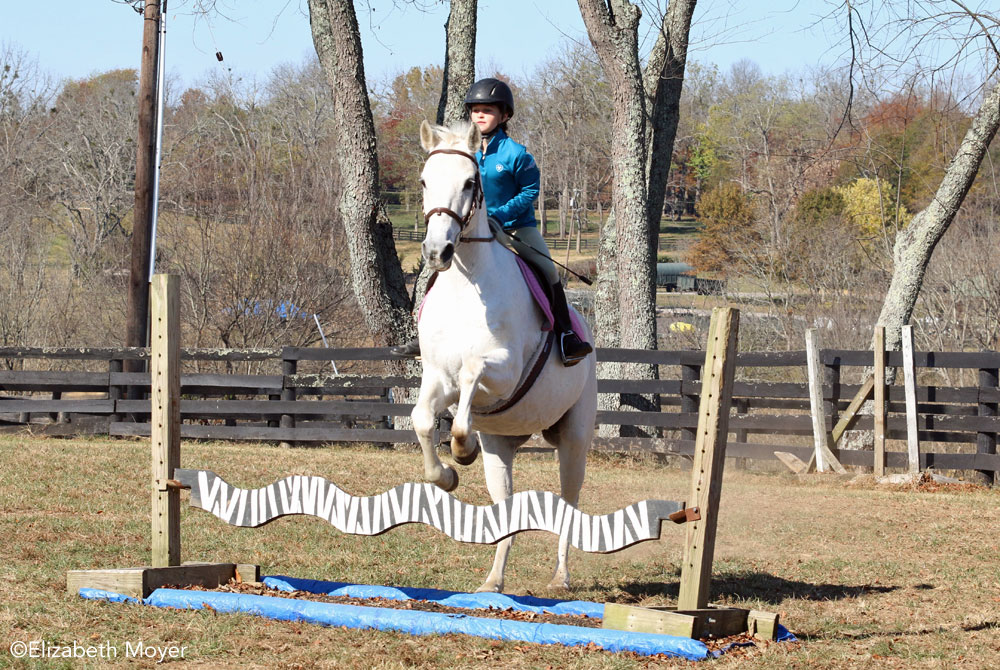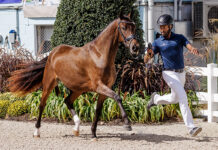Horse jump refusals can be serious, but by following these tips you and your horse can have a much safer training session.
Horses that refuse to jump will do so in one of two ways: they will stop at the fence or they will run around it. Read on to find out what to do with each type of horse jump refusals.

The Wanderer
You know the sort: If you don’t seriously lock on and stare down the line of jumps, dead in the center, your steed will slowwwlllly start drifting to one side of the fence or another, doing a flyby instead of hopping over it.
It’s important to know exactly how to get your horse straight and keep him that way. Try to imagine you’re riding him in between two train tracks.
Why He Does It: Sometimes a horse drifts because he’s simply lazy or because the jumps are not exciting to him. In other cases, the rider may unintentionally be asking him to travel crooked. We all have a leg and arm that is stronger than the other; your horse may be so sensitive that he thinks he is doing what you ask!
How to Fix It: When schooling at home, use poles on the ground to create a chute, aiming to the center of each fence. This will allow you to focus on riding your pony straight at the fence, and it will tell you just how much he wants to drift based on how much you have to correct him to stay straight.
You can also choose a focal point like a tree or a fence post on your way to the fence and make a big effort to ride straight to it.
The Dirty Stopper
A dirty stopper is just that: dirty! A stop on this horse happens when he takes advantage of your error and refuses to jump instead of simply going over it. This problem is one of the most difficult to correct.
Why He Does It: Instead of telling the horse that he IS going over the fence, you may let your mind wander to what happens next, or notice your trainer at the end of the ring. The dirty stopper will take advantage of this split-second of inattention and slam on the brakes in front of the fence, possibly throwing you over it.
How to Fix It: While you can work diligently on keeping your attention focused on every step of the ride, the best way to get a horse over this habit is to have your trainer or a skilled rider get on and remind him that refusing is not an option.

The Scaredy Cat
Some horses have a hard time even getting near jumps they’re afraid of. Unlike the dirty stopper, a horse who is afraid of a jump will tell you from many strides back (maybe even as soon as he gets in the ring!). He most likely will be reluctant to even enter the part of the ring where the jump is.
Why He Does It: A ‘fraidy cat will pick his head up, flare his nostrils and turn into a wiggle worm, leaving you with no doubt that he’s telling you that you’re approaching (what he feels is) a horse-eating fence.
Some horses will just gallop right on by the fence, ignoring the rider’s request to jump the obstacle; others may act out by rearing or refusing to go anywhere near the fence.
How to Fix It: Both solid citizens and green horses can think a fence is scary. For older, seasoned horses, many are simply toying with a novice rider to see if she will really make him exert the effort to jump.
Green horses may truly believe that the fence is not safe. It’s important that you introduce your horse to things at home, where he is most comfortable, before he sees them at a show.
You can introduce everything from greenery to flowers and even tents in the area where he feels most brave.
Moving Forward
No matter how your horse refuses, it’s important to immediately reprimand him and tell him that refusing to jump is not an option. If you are carrying a crop (and if you ride a horse you even THINK will consider stopping, you should be carrying one!), tap him once or twice behind your leg. Never tap a horse in front of the girth; his hind end is his motor, and this is what you need to keep engaged.
Next, shorten your reins so you have a good feel of his face. Sit tall and back when you approach the fence again–perching or crawling up your horse’s neck will only make him wonder why you’re anxious and encourage him to be scared.
If your pony is repeatedly stopping, be sure to ask your trainer what she thinks is wrong. She may have the vet out to be sure your pony doesn’t hurt, or she may get on him herself to make sure you don’t get hurt. Either way, you will be sailing over fences again in no time!
Special thanks to YR reader Hollyn for demonstrating these exercises on her favorite pony, Ashyln.
This article about horse jump refusals originally appeared in the January/February 2017 issue of Young Rider magazine. Click here to subscribe!
Further reading:






